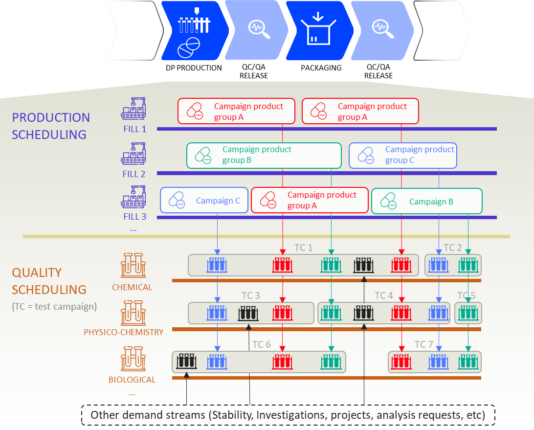
3 must-dos when you have to tear down silos
Admit it. Trying to bring about cross-departmental change within a company is… well, hard work. Because in many companies, these “silos” or invisible boundaries in between departments seem to suddenly appear. If you want to take them down, these three tips will take you further than any helmet or sledgehammer.
Don’t get us wrong, we love silos. As supply chain and operations consultants, we often come across them while running projects. They make excellent structures for storing bulk materials such as grains, cement, food products, etc. But if silos are part of a company structure, we think of silos as carbon monoxide: invisible, slowly sucking away all the energy you need to move forward.
What is a “silo company” anyway?
APICS® describes a “silo company” as a “semi-functional enterprise where the different departments work next to each other instead with each other.” People trying to improve within a silo company often run into functional limitations. Their initiatives have a high risk of failure due to the lack of communication and collaboration between the different departments.
What if you want to improve across departments?
Let’s get one myth out of the way: There is no easy solution. You need to tear down the walls that form the silos. If not, you’ll find that all the effort you’ve put into your change project was a waste of time, money and resources. And what’s worse, you’ll end up with a frustrated and disillusioned workforce.
How can you take down the silos?
There are three things you need to keep in mind if you want cross-departmental change:
1. Create a common goal.
When people work in silos, they all have their own goals. And while there’s nothing wrong with having personal goals, they shouldn’t stand in the way of the goal of your company: a happy customer.
Your customers don’t care if (or how) your departments work together. Except when it causes inefficiencies that impact them and their business. In that case, they will run to your competitors if they can help them faster, better and cheaper.
In other words, the goal of your company should also be the goal of each department. And each department needs to be aware of that company goal in order to act accordingly. Remember the Cheshire Cat in Alice in Wonderland: “If you don’t know where you’re going, any road will take you there.”
2. Introduce cross-departmental incentives.
Once you’ve stated a common goal, you need to change the way you evaluate and reward your people. In silo companies, people are rewarded if they reach certain KPIs linked to how well their department functions.
However, if you want all your departments to work together to reach a common goal, they should also be assessed against KPIs that involve multiple departments. So, instead of evaluating different departments individually on how they perform, you could consider evaluating them on cross-departmental metrics such as “perfect order fulfillment.” To achieve a good score on that front, your departments will have to work closely together.
3. Provide tools and technology—with guidance.
If you want your employees from different departments to work together, you should provide them with the tools and technology that will allow them to collaborate more easily and share information, even if departments are located on different sites.
There are plenty of tools and platforms to help you with this. Just make sure your people don’t get overwhelmed. When you introduce tools and technology, make sure it’s clear to everyone what tool can be used to what end.
Dive & Climb: Cross-departmental change with Bluecrux
These changes don’t happen overnight and require an intense effort from your entire workforce. That’s why we have Bluecrux’ers that specialize in organizational change. They dive into your entire organization, get to know your workforce at various levels and climb together to the top. Until everyone—across all departments—has a wide and confident view of what the future can bring.
Want to find out how we can help your company? Drop us a line!


